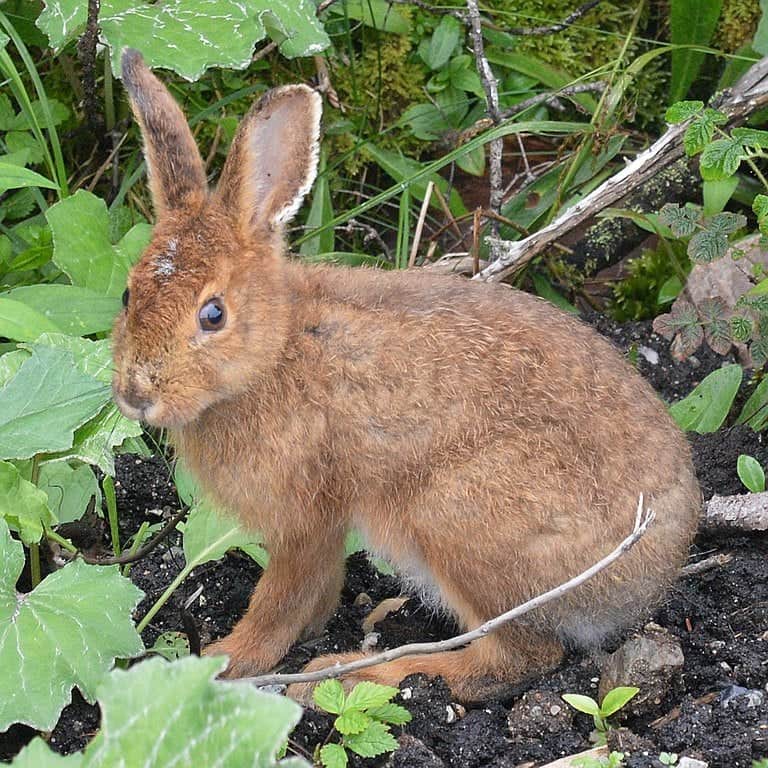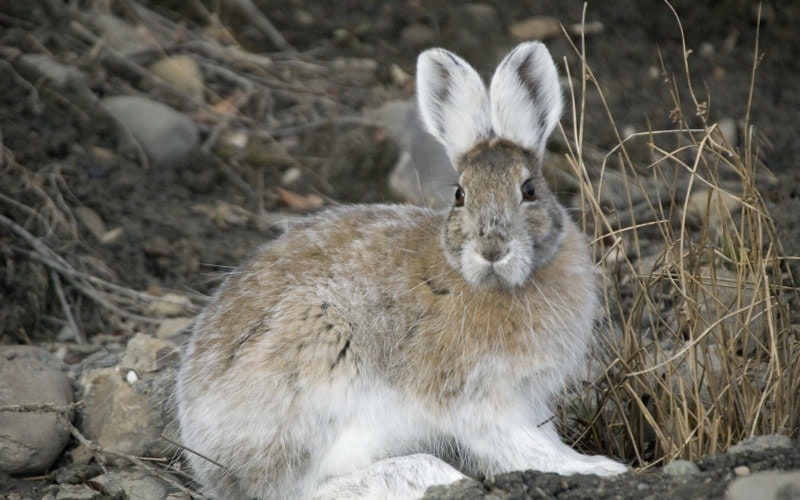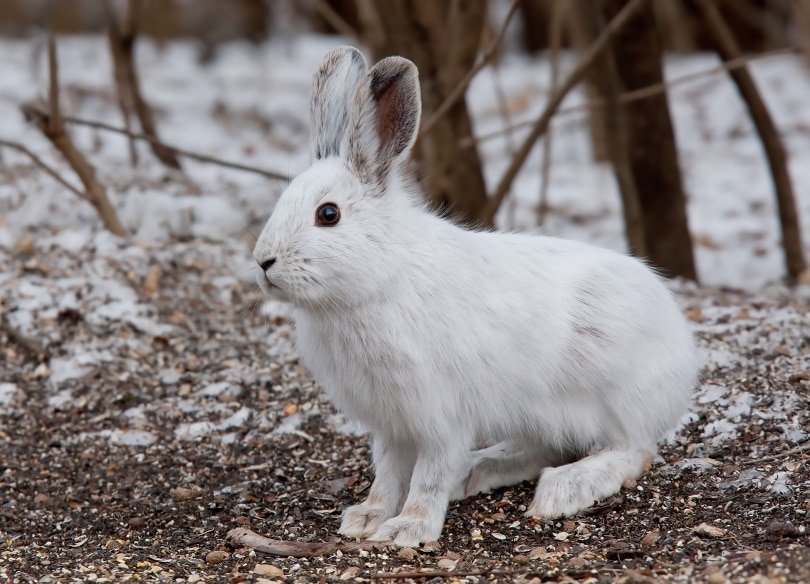The Snowshoe hare is a fascinating breed with several special traits, many of which set them apart from rabbits. You’ll find Snowshoe hares mostly in coniferous and boreal forests typical of the northern parts of the United States, including the Pacific Northwest, New England, and Montana. To learn more furry facts about the Snowshoe hare, including the one trait that sets it apart from most hares and rabbits, read on!
| Size: | Between 18–20 inches, medium/large |
| Weight: | Up to 4 lbs |
| Lifespan: | Up to 5 years (estimated) |
| Similar Breeds: | White-tailed jackrabbit |
| Suitable for: | Farmers or those who own large tracts of land |
| Temperament: | Wild, not domesticated |
The Snowshoe hare isn’t known for being a pet but rather an interesting mammal of the genus Lepus Americanus. It is a wild animal that has never been domesticated, but it has been hunted for food for centuries and is considered a clean and valuable protein. One fascinating trait about Snowshoe hares is that they change color twice a year, turning white in winter and reddish-brown in springtime. Doing this helps the Snowshoe hare blend in with its surroundings. In that way, it gains extra protection from predators.
Snowshoe Hare Breed Characteristics
[yasr_multiset setid=7]
Snowshoe Hares: Wild Animals
Snowshoe hares are a wild breed and, thus, unavailable for purchase. There are several reasons for this, including that Snowshoe hares need a large environment to thrive and survive. These large hares are known to forage in an area as large as 50 acres which is bigger than many farms. In other words, they are not animals that can be successfully kept in cages or pens. For those reasons and several others, if you’re looking for a pet rabbit to purchase, you’ll need to find another breed.

Temperament & Intelligence of the Snowshoe Hare
As wild animals, the temperament and intelligence of the Snowshoe hare are difficult to say. However, Snowshoe hares can run incredibly fast thanks to their larger back legs and foot pads. When you consider that the Snowshoe hare’s predators include foxes, wolves, coyotes, and other large, fast predators, you can imagine why they’ve evolved to be incredibly agile, fast, and intelligent mammals. The Snowshoe hare’s speed is legendary, as is its ability to avoid and evade predators.
Can Snowshoe Hares Be Kept Pets?
The Snowshoe hare is not a domesticated species but is 100% wild. No ethical breeders raise Snowshoe hares, and you won’t find them in pet stores. Also, like most wild animals, the risk of being exposed to diseases like rabies is high when handling a Snowshoe hare. For this reason, experts recommend against capturing a wild Snowshoe hare and trying to turn it into a pet.

Do Snowshoe Hares Get Along With Other Animals?
Because the Snowshoe hare is not domesticated and can’t be purchased as a pet, no data suggests if it will get along (or not) with other pets. One thing you can be sure of is that if a Snowshoe hare were to come near your dog or cat, and your pet gave chase, the chance of it catching the hare is slim to none since they’re incredibly fast.

Things to Know About Snowshoe Hares:
Food & Diet Requirements
Like many small, wild mammals, the Snowshoe hare is a herbivore and lives on a diverse diet of plants, fruits, grasses, and vegetables in the wild. In winter, the Snowshoe hare will also feast on new growth from trees, including their bark.
Habitat
Keeping in mind that the Snowshoe hare is a wild animal, its environmental requirements are met by the coniferous forests of North America. The typical Snowshoe hare requires approximately 25 acres of land to live, procreate and survive. As a non-domesticated animal, no hutch requirements are available for the Snowshoe hare.

Exercise & Sleeping Needs
Because they have few rods and cones in their eyes, the Snowshoe hare finds it difficult to see well in bright light. As a nocturnal mammal, you’ll see the Snowshoe hare in the morning and early evening. Most sleep through the day to better avoid predators.
Lifespan and Health Conditions
While Snowshoe hares can live up to approximately 5 years, most do not survive that long in the wild. Instead, they become food for larger predator mammals, including foxes, coyotes, wolves, bears, hawks, and owls.
- Fleas and Ticks
- Rabies

Male vs Female
Aside from their different sex organs, male and female Snowshoe hares are alike in coloration, size, lifespan, and other discernible traits.
- Related Read: Mountain Hare: Facts & Pictures
3 Little-Known Facts About Snowshoe Hares
1. Some Snowshoe Hares Don’t Change Color With the Season
Climate change is considered the main reason for this, but it’s just a working hypothesis.
2. Snowshoe Hares Can Run Upwards of 50 Miles Per Hour
The Snowshoe hare can go from a sitting, relaxed position to a sprint in a split second when attacked or frightened.
3. The Snowshoe Hare Is Born With Fur, and Its Eyes Open
On the other hand, the typical rabbit is born furless and with its eyes still shut.


Final Thoughts
While it might not be domesticated, the Snowshoe hare is fascinating nonetheless. They’re able to change their fur color to better blend in with their environment; their fur turns white in winter, and they have extra-large foot pads to move around in the snow, hence the “Snowshoe” moniker. The Snowshoe is prolific in North America and usually stays within 25 to 50 acres of the area where it was born.
Wildlife officials do not recommend trying to catch and raise a Snowshoe hare as a pet due to their wild nature and the risk of disease. If you see a Snowshoe hare in the wild, it’s best to admire its beauty and ability to survive in an often harsh and unforgiving world.
- Related Read: Hispid Hare
Featured Image Credit: Jim Cumming, Shutterstock
